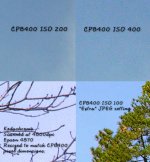Hi everybody,
Judging from the posts I have read (only a small portion of course), most people, especially the more advanced, are using digital cameras. I have never tried that, and I am still not really convinced, although I clearly see some of the advances. But apart from all biases (esp. from my fiance ;-)), I would like to know more about the pros and cons of digital photography. Only from an amateurs view, besides from birds I would like to continue taking shots of building, landscapes, close captures of flowers and insects, snapshots of people etc. My current camera is a pretty old Canon EOS 650 (Must be more than 15 years old now), and since I am seriously thinking of buying a new lense with 500 or 600 mm (300 just is not enough for most birds), I also have to consider if I should not invest in a whole new equipment. At least now that I have some more money to spend for that. Although I do not like the thought of buying new thinks as long as the old ones are still functioning, and I also know that handling two cameras wil be to complicated for hiking or bicycling trips...
Sorry about this long and chaotic thread, but it shows that I am quite at a loss and still very undecided. Any help would be greatly appreciated.
Thanks, Marcella
Judging from the posts I have read (only a small portion of course), most people, especially the more advanced, are using digital cameras. I have never tried that, and I am still not really convinced, although I clearly see some of the advances. But apart from all biases (esp. from my fiance ;-)), I would like to know more about the pros and cons of digital photography. Only from an amateurs view, besides from birds I would like to continue taking shots of building, landscapes, close captures of flowers and insects, snapshots of people etc. My current camera is a pretty old Canon EOS 650 (Must be more than 15 years old now), and since I am seriously thinking of buying a new lense with 500 or 600 mm (300 just is not enough for most birds), I also have to consider if I should not invest in a whole new equipment. At least now that I have some more money to spend for that. Although I do not like the thought of buying new thinks as long as the old ones are still functioning, and I also know that handling two cameras wil be to complicated for hiking or bicycling trips...
Sorry about this long and chaotic thread, but it shows that I am quite at a loss and still very undecided. Any help would be greatly appreciated.
Thanks, Marcella




